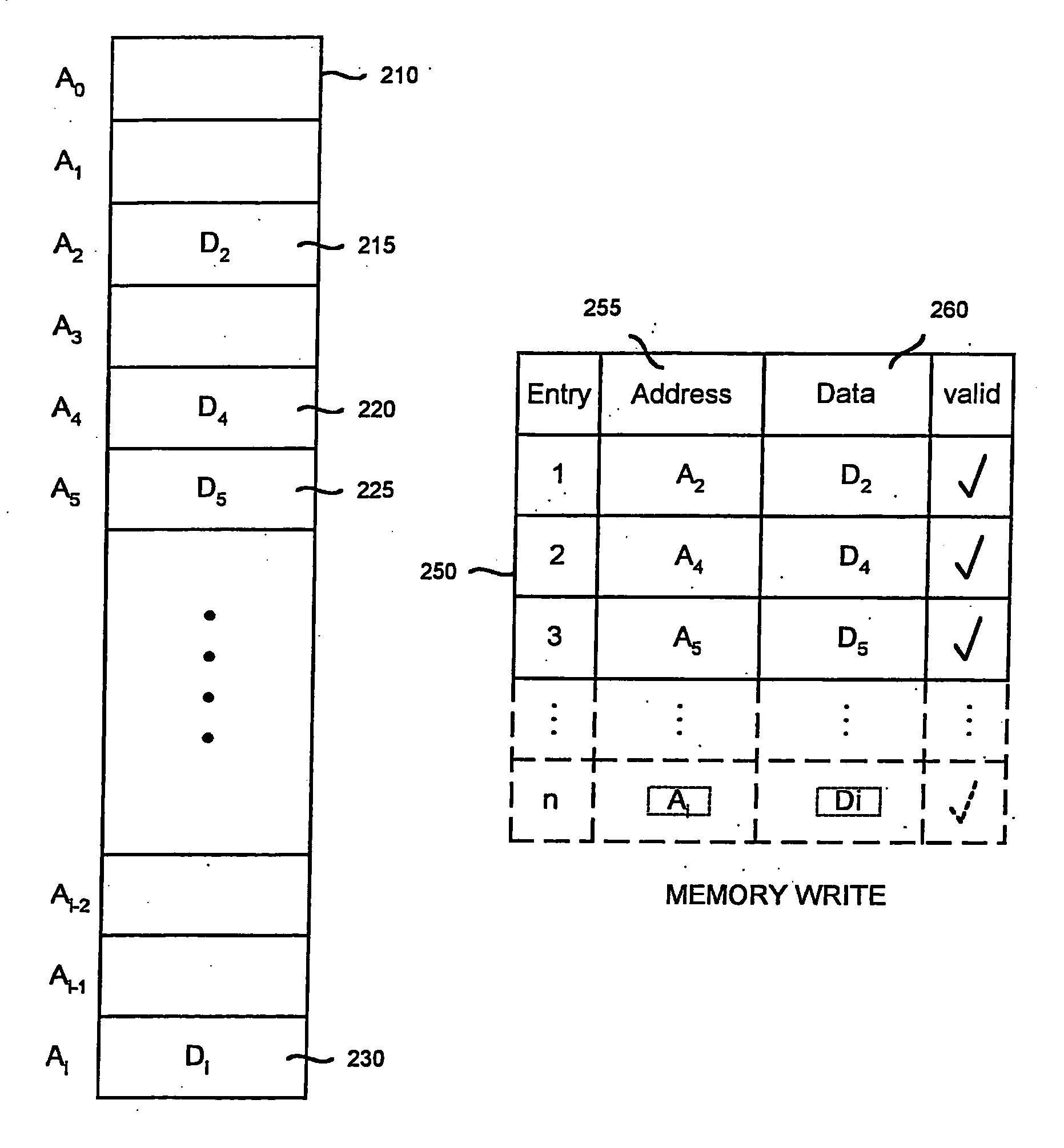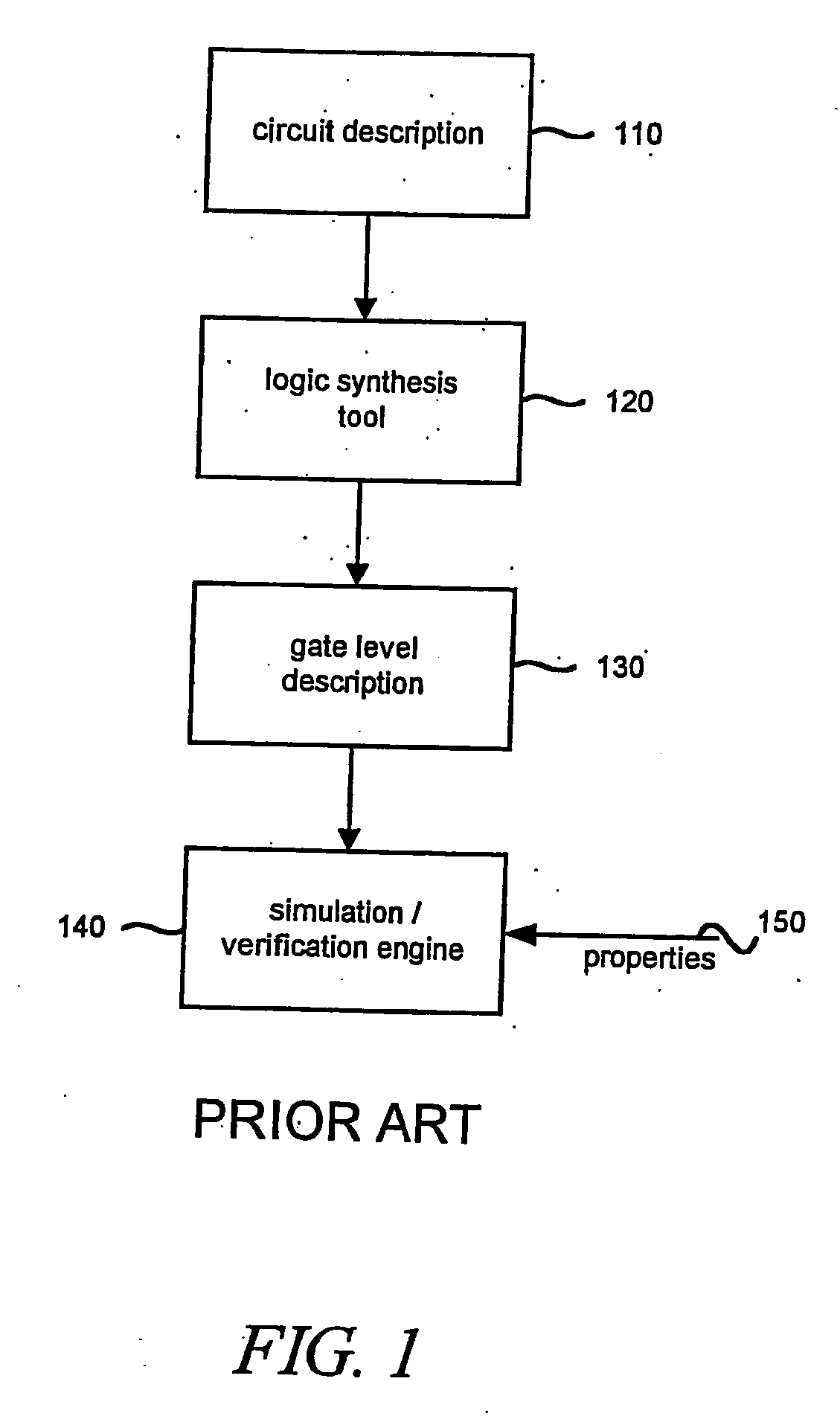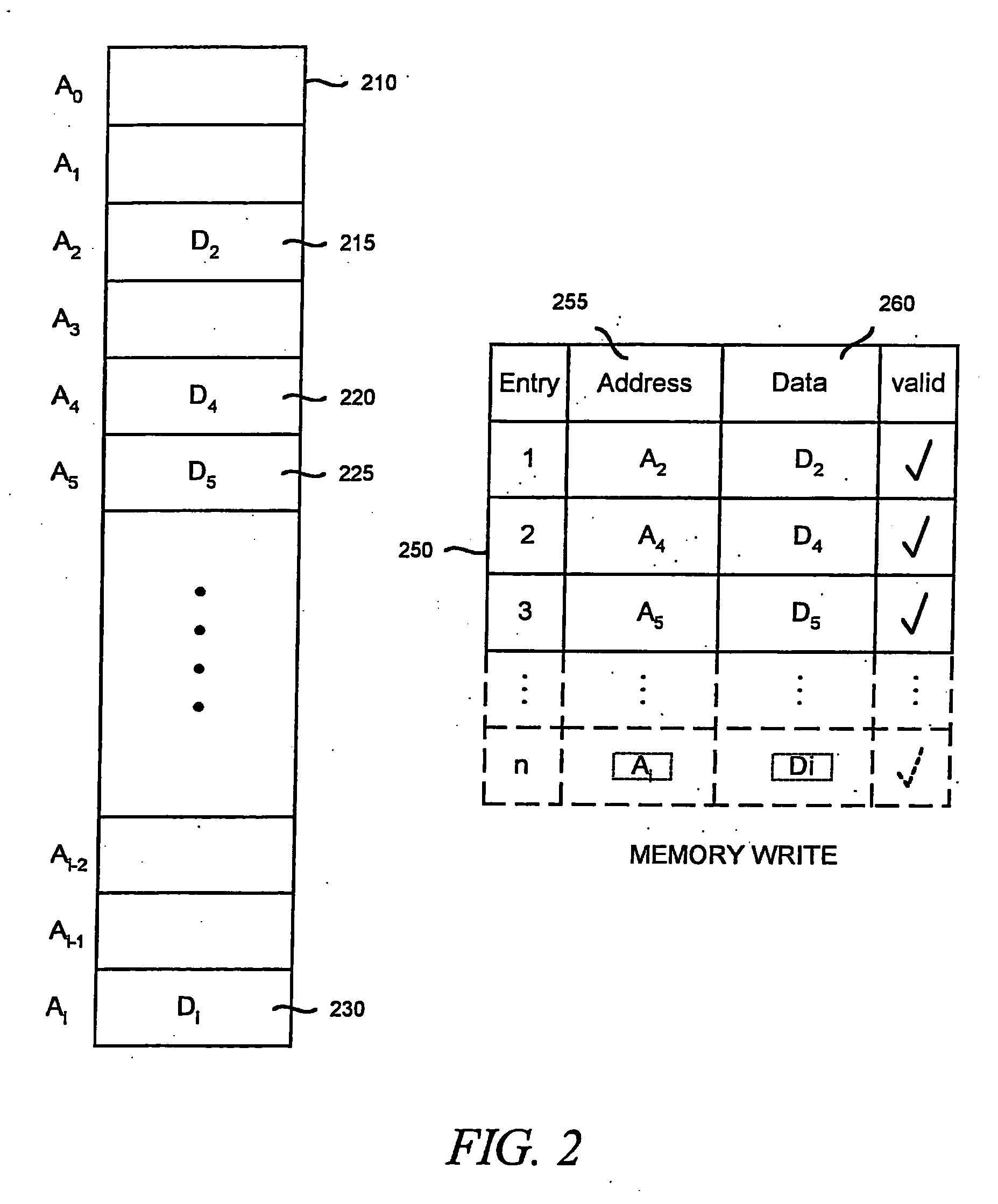Circuit-level memory and combinational block modeling
a combinational block and circuit-level memory technology, applied in the field of memory modeling, can solve the problems of inefficiency and waste of design resources, memory models from one eda tool vendor can typically only be used with simulation or verification engines from the same vendor, and prior art memory models suffer from two major disadvantages
- Summary
- Abstract
- Description
- Claims
- Application Information
AI Technical Summary
Benefits of technology
Problems solved by technology
Method used
Image
Examples
Embodiment Construction
[0022]FIG. 2 illustrates a memory model that can be implemented as lookup table 250, for use in modeling a physical memory 210 of an electronic circuit design. While physical memory 210 contains “i” locations, data has been written to only four of those locations. In physical memory 210, for example, the electronic circuit design has written a plurality of write data bits represented by D2 to write address A2. A plurality of write data bits represented by D4 have been written to write address A4. A plurality of write data bits represented by D5 have been written to write address A5. A plurality of write data bits represented by Di have been written to write address Ai. Rather than modeling all “i” locations of physical memory 210, the present invention models only those locations of physical memory 210 that have been accessed by the electronic circuit design. Lookup table 250 is created to perform this task. Lookup table 250 comprises an address field 255, a data field 260, and a va...
PUM
 Login to View More
Login to View More Abstract
Description
Claims
Application Information
 Login to View More
Login to View More - R&D
- Intellectual Property
- Life Sciences
- Materials
- Tech Scout
- Unparalleled Data Quality
- Higher Quality Content
- 60% Fewer Hallucinations
Browse by: Latest US Patents, China's latest patents, Technical Efficacy Thesaurus, Application Domain, Technology Topic, Popular Technical Reports.
© 2025 PatSnap. All rights reserved.Legal|Privacy policy|Modern Slavery Act Transparency Statement|Sitemap|About US| Contact US: help@patsnap.com



